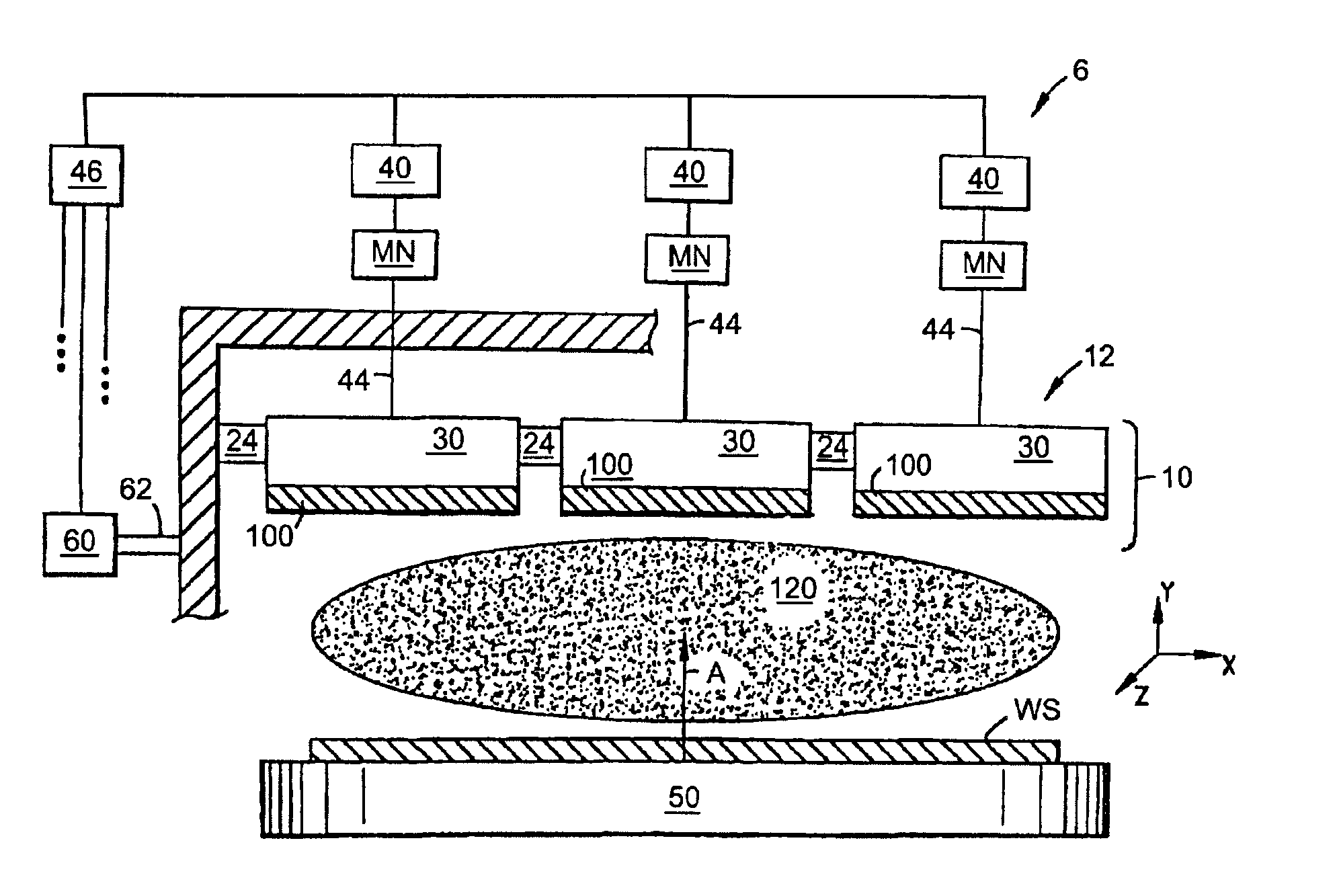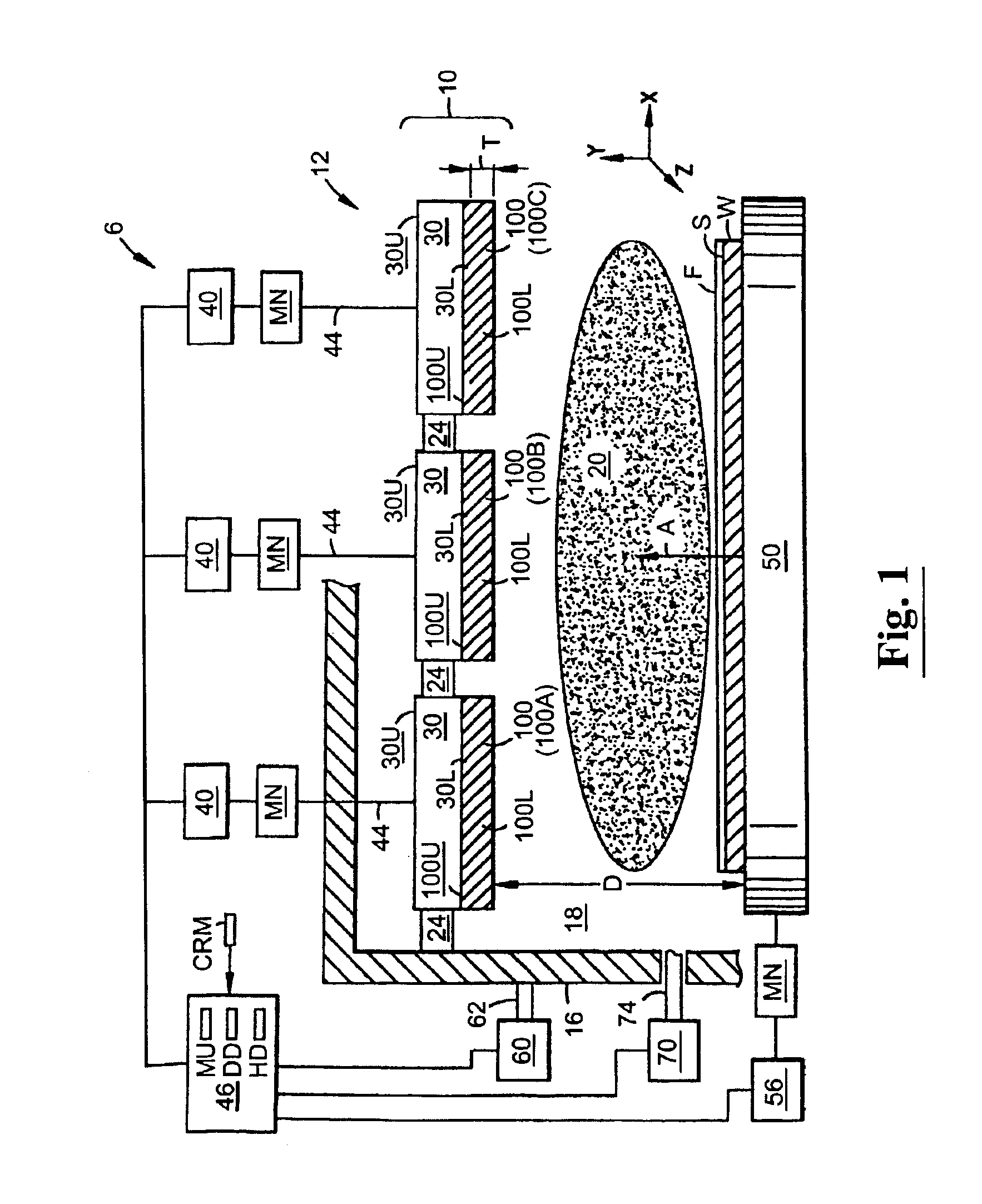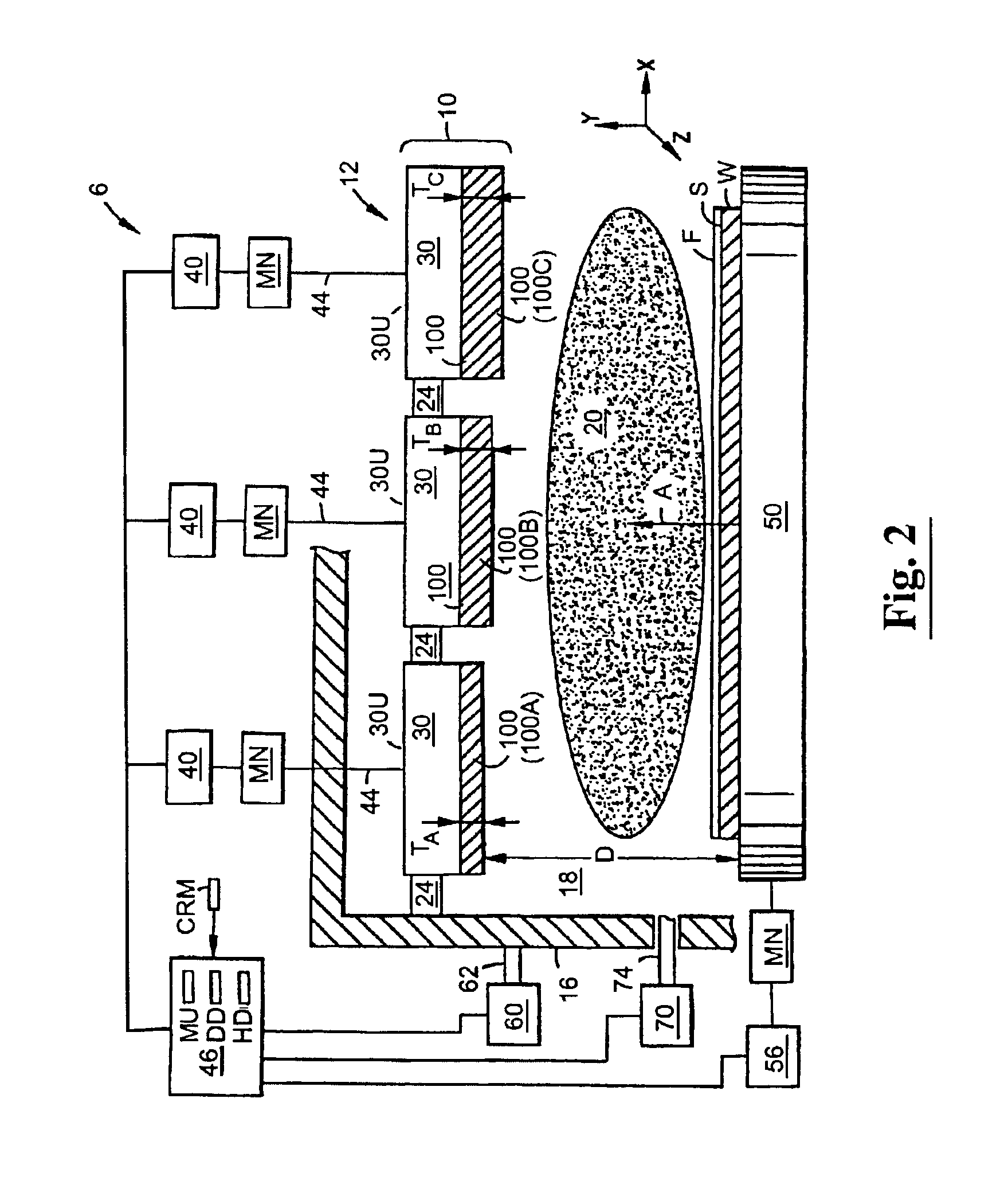Method of adjusting the thickness of an electrode in a plasma processing system
a plasma processing system and electrode technology, applied in the direction of cables/conductor manufacture, fluid pressure measurement, instruments, etc., can solve the problems of scavenging fluorine radicals, affecting the performance of devices made from workpieces, and controlling the thickness of plasma to achieve uniform etching, etc., to reduce the thickness differential between plates
- Summary
- Abstract
- Description
- Claims
- Application Information
AI Technical Summary
Benefits of technology
Problems solved by technology
Method used
Image
Examples
Embodiment Construction
[0024]The present invention pertains to electrodes used in plasma processing systems, and will be described in detail with reference to electrodes having a sacrificial protective layer and used in a reactor to perform an etching operation on a workpiece.
[0025]With reference to FIG. 1, there is shown a plasma processing system 6 having an electrode assembly 10 arranged within a plasma reactor chamber 16. The latter has an interior region 18 capable of supporting plasma 20 having a plasma density profile. Electrode assembly 10 may be any one of a number of known electrode assemblies, such as a segmented electrode, a single electrode, or a multi-part electrode assembly composed of a large unitary electrode and a segmented electrode disposed above the unitary electrode and capacitively coupled thereto. An example of a segmented electrode is disclosed in U.S. Provisional Patent Application No. 60 / 185,069, entitled “MULTI-ZONE RF ELECTRODE FOR FIELD / PLASMA UNIFORMITY CONTROL IN CAPACITIVE...
PUM
| Property | Measurement | Unit |
|---|---|---|
| thickness | aaaaa | aaaaa |
| thickness | aaaaa | aaaaa |
| thickness | aaaaa | aaaaa |
Abstract
Description
Claims
Application Information
 Login to View More
Login to View More - R&D
- Intellectual Property
- Life Sciences
- Materials
- Tech Scout
- Unparalleled Data Quality
- Higher Quality Content
- 60% Fewer Hallucinations
Browse by: Latest US Patents, China's latest patents, Technical Efficacy Thesaurus, Application Domain, Technology Topic, Popular Technical Reports.
© 2025 PatSnap. All rights reserved.Legal|Privacy policy|Modern Slavery Act Transparency Statement|Sitemap|About US| Contact US: help@patsnap.com



